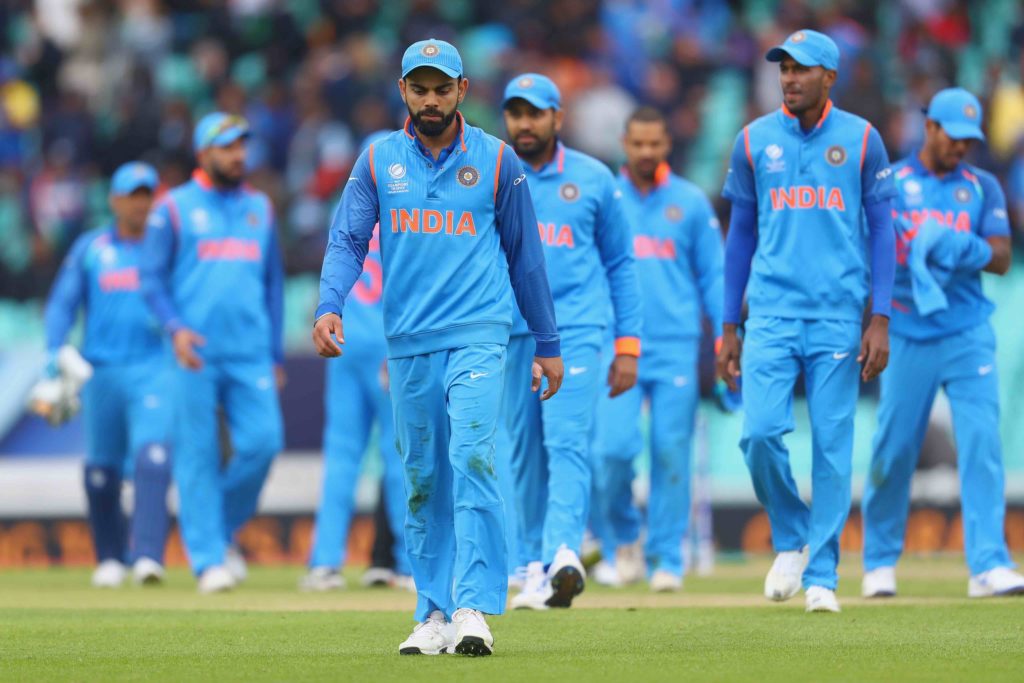The Proteas need to exploit India’s dent in confidence and target their weaker bowling attack.
AB de Villiers’ decision to bat first on Wednesday played the match right into Pakistan’s hands. While the Proteas would have backed themselves to beat them from that position, Pakistan’s strength lies in their bowling, and they were allowed to utilise that up front.
Pakistan’s batsmen lack the firepower to put together big totals, but the rain, which the Proteas would have known was expected to come later in the day, allowed the likes of Babar Azam and Mohammad Hafeez to set calculated targets for themselves. I don’t know if it was a matter of overthinking the situation or complacency, but batting first simply made no sense.
The result is that Sunday’s game now becomes a knockout game, and the Proteas, unlike as they did against Pakistan, need to cash in on India’s weaknesses. India are rattled from their seven-wicket defeat to Sri Lanka. With two run-outs and just one wicket coming from a bowler, Sri Lanka’s batsmen made the most of a flat batting surface and gave it a real go. India’s bowlers will be low on confidence, and if they had a weak area in their side going into this tournament, this was always it.
Generally speaking, the Oval has provided batting wickets. Chasing targets has been a reasonably straightforward task. Although India’s strength lies in their batting, the Proteas should avoid repeating their mistake against Pakistan and give their bowlers a chance to do the job up front. It’s not going to be easy against India’s top five. Their openers have scored plenty of runs. Yuvraj Singh and MS Dhoni have fifties in this tournament, and Virat Kohli will want to forget that duck on Friday very quickly.
The pace of the wicket has been a touch inconsistent at times, but it seems to flatten out later in the day. The pacemen have had the most success, with Liam Plunkett and Mitchell Starc taking 4-59 and 4-29 against Bangladesh respectively. It really might just come down to bowling in the right areas, and that’s why I would bring in Andile Phehlukwayo in place of Wayne Parnell.
The Indians would probably fancy targeting Parnell with the new ball, as he has been in the first two games. He hasn’t been hitting the right lengths consistently enough. While the Indians will be bracing themselves for out-and-out pace, Phehlukwayo will mix it up, and they haven’t faced him before.
Neil McKenzie spoke about trusting each other to do the job in pressure situations, and the rest of the players need to rally around their bowlers against this Indian line-up. Kagiso Rabada is the No 1 ODI bowler in the world and would’ve bowled against most of these batsmen in the IPL. If the bowlers can restrict India to a total of around 300, it will be doable against India’s bowlers. Morne Morkel has been on fire, and I back him to open the bowling with Rabada. Make them uncomfortable from the onset.
The only Indian pace bowler that provides a real threat, is Bhuvneshwar Kumar. He’s one of the only bowlers to have found a bit of swing, and it would be wise to see him off at first.
The major threat will be Ravichandran Ashwin, who will undoubtedly be coming in to make his first appearance of the tournament at the expense of the inconsistent Umesh Yadav or the inexperienced Jasprit Bumrah. We’re not in India, and we’re not playing Tests; the Proteas batsmen – especially the left-handers – shouldn’t see Ashwin as the same threat that he provides in that arena.
If the Proteas win the toss and choose to bowl first, the bowlers should be trusted to do the job against anyone. After all, we occupy the top-two bowling spots in the world. Should we bat first, we have the quality to expose India’s stocks.
Photo: Clive Rose/Getty Images







